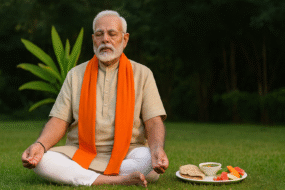Apollo Neurologist Explains the Simple 10-Second Test That May Signal Brain, Nerve and Heart Health
A common childhood exercise — standing on one leg — is now being recognised by neurologists as a powerful early indicator of overall neurological, muscular, and even cardiovascular health. Apollo Hospitals neurologist Dr. Sudhir Kumar recently highlighted on X how this simple 10-second balance test is emerging as a surprising predictor of long-term health and longevity, especially for people above 50.
According to Dr. Kumar, the ability to stand on one leg without support is not just a balance skill, but a coordinated effort involving multiple systems:
- the inner ear (vestibular system),
- muscle-joint feedback (proprioception),
- the cerebellum, which manages coordination,
- and overall muscle strength across the hips, legs, ankles, and core.
Difficulty performing this simple action may indicate early issues such as neuropathy, cerebellar disorders, Parkinson’s disease, mild cognitive decline, or age-related muscle weakness.
Study Links Balance to Longevity
Dr. Kumar cited a 2022 study of 1,700 adults aged 51–75, which found that people unable to stand on one leg for 10 seconds had nearly double the risk of death over the next seven years. While the test is not a diagnosis, it is considered a strong marker of reduced physiological reserve.
What’s Considered Healthy?
Normal balance times (eyes open):
- Under 40 years: ~45 seconds
- 40s: ~40 seconds
- 50s: ~35 seconds
- 60s: 20–25 seconds
- 70+ years: Holding 10 seconds is considered healthy
Dr. Kumar advised performing the test safely — standing near a wall or support — and testing both legs, as significant left–right differences can also reveal underlying issues. Consistent difficulty, he added, should prompt a medical evaluation to check nerve, muscle, or cerebellar function.






One reply on “This Simple 10-Second Balance Test May Reveal Early Brain, Nerve, and Heart Issues, Says Apollo Neurologist”
[…] Originally published on 24×7-news.com. […]